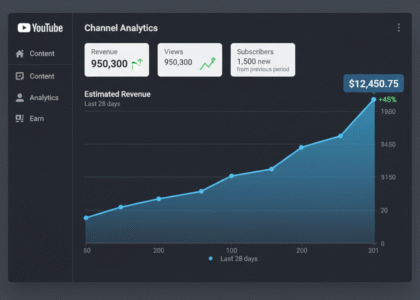Investing is one of the smartest ways to build long-term wealth, yet many beginners hesitate to take the plunge. Questions like “Where do I start?” and “What if I lose money?” often hold people back. The truth is, learning how to start investing doesn’t have to be overwhelming. With the right steps and mindset, anyone can grow their wealth and secure their financial future. Let’s dive into this beginner-friendly guide to get you started.
How to start investing?

Investing allows your money to grow over time, thanks to compound interest and market returns. Here’s why you should consider starting today:
- Financial Independence: Investing can help you achieve goals like buying a home or retiring comfortably.
- Beat Inflation: Your money loses value over time if it just sits in a savings account. Investing keeps your purchasing power intact.
- Achieve Wealth Over Time: Even small amounts can grow significantly when given time to compound.
Pro Tip: The earlier you start, the more time your money has to grow. Even a small amount invested today can turn into a substantial sum in the future.
Step 1: Set Clear Financial Goals How to start investing?
Before you start investing, ask yourself these questions:
- What are my short-term and long-term financial goals?
- How much risk am I comfortable taking?
- When do I need the money I invest?
For example:
- Short-term goals: Saving for a car or vacation.
- Long-term goals: Retirement or building generational wealth.
Step 2: Understand the Basics of Investing

What Are Your Investment Options? How to start investing
- Stocks: Partial ownership in a company. High risk, high return.
- Bonds: Loans to companies or governments. Lower risk, steady income.
- Mutual Funds and ETFs: Pooled investments offering diversification.
- Real Estate: Investing in property for rental income or resale.
Why Diversification Matters
Spreading your investments across different assets reduces risk. For example, if one stock performs poorly, other investments in your portfolio can offset the loss.
Step 3: Create a Budget for Investing How to start investing?
You don’t need a fortune to start investing. Begin by allocating a portion of your income to investments:
- Use the 50/30/20 Rule:
- 50% of your income for needs,
- 30% for wants,
- 20% for savings and investments.
- Start Small: Even $100 a month can grow over time.
Step 4: Choose an Investment Platform

With the rise of technology, investing has never been easier. Here are some options:
- Robo-Advisors: Platforms like Betterment or Wealthfront that automatically manage your investments.
- Brokerage Accounts: Services like Vanguard or Fidelity allow you to manage your own investments.
- Micro-Investing Apps: Apps like Acorns and Stash let you invest small amounts, even your spare change.
Step 5: Start with Index Funds or ETFs
If you’re wondering where to begin, index funds and ETFs are excellent choices. They are:
- Low-Cost: Minimal fees compared to actively managed funds.
- Diversified: Provide exposure to multiple assets in one fund.
- Beginner-Friendly: No need to pick individual stocks.
Step 6: Keep Learning

Investing is a journey. Stay informed by:
- Reading trusted financial blogs like GetCashVibe.
- Following reputable financial news sources like Investopedia.
- Listening to podcasts or watching YouTube channels on investing basics.
Step 7: Be Patient and Stay Consistent
Investing is not a get-rich-quick scheme. It takes time and discipline.
- Avoid Emotional Decisions: Markets fluctuate, and it’s normal for investments to dip occasionally.
- Stick to Your Plan: Keep investing regularly, even when the market is down.
- Think Long-Term: The longer you stay invested, the higher your potential returns.
How to start investing? Common Mistakes to Avoid
- Trying to Time the Market: Focus on time in the market, not timing the market.
- Ignoring Fees: High fees can eat into your returns over time.
- Investing Without Research: Understand where your money is going.
The Power of Starting Today
The best time to start investing was yesterday. The second-best time is now. Every dollar you invest today is a step toward financial freedom.
FAQs
1. How much money do I need to start investing?
You can start with as little as $5 using micro-investing platforms.
2. What’s the safest way for beginners to invest?
Index funds and ETFs are beginner-friendly, low-cost, and diversified.
3. How long should I invest for?
Investing is most effective when you think long-term—ideally 5+ years.
4. Can I lose money in investing?
Yes, but diversification and a long-term approach reduce risks.
5. Where can I learn more about investing?
Check out guides and tips on GetCashVibe and other reputable financial websites.
Discover More on GetCashVibe!
Are you ready to take control of your financial future? Explore GetCashVibe for more tips and tools to achieve your money goals. Don’t wait—start investing today!






